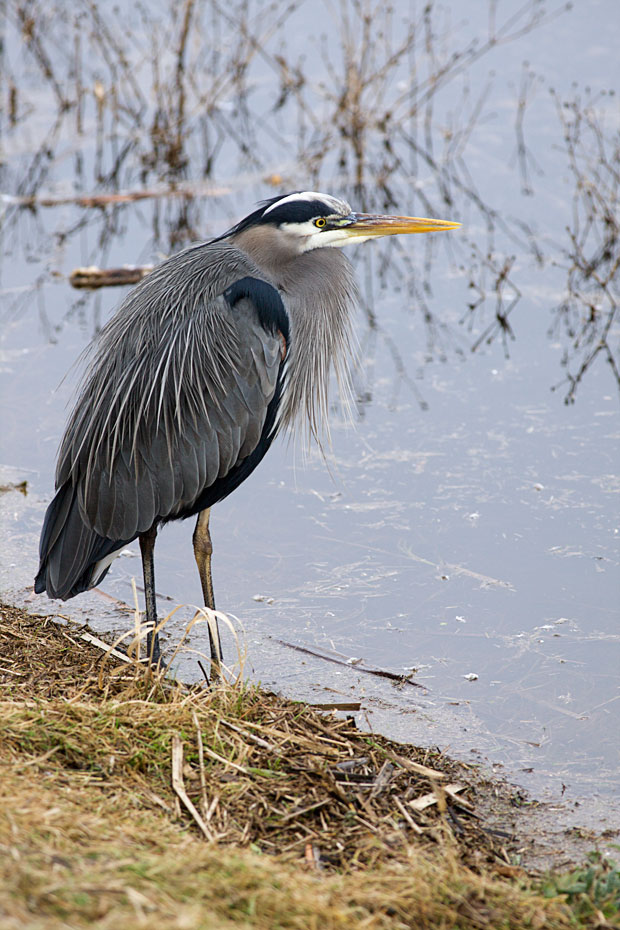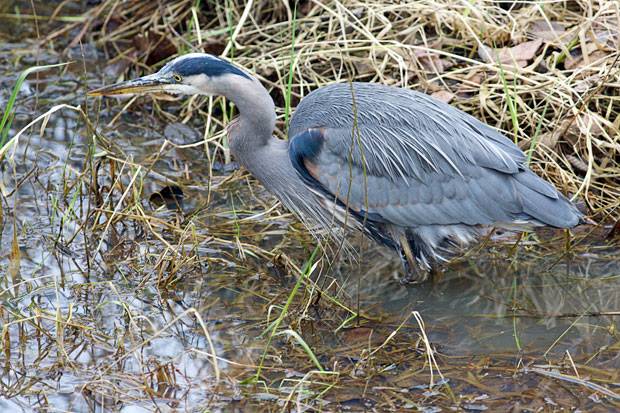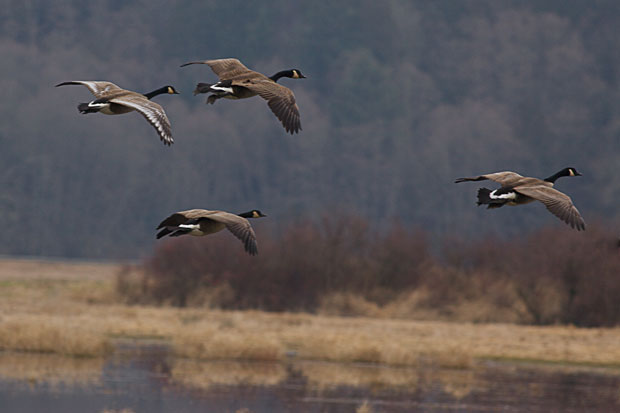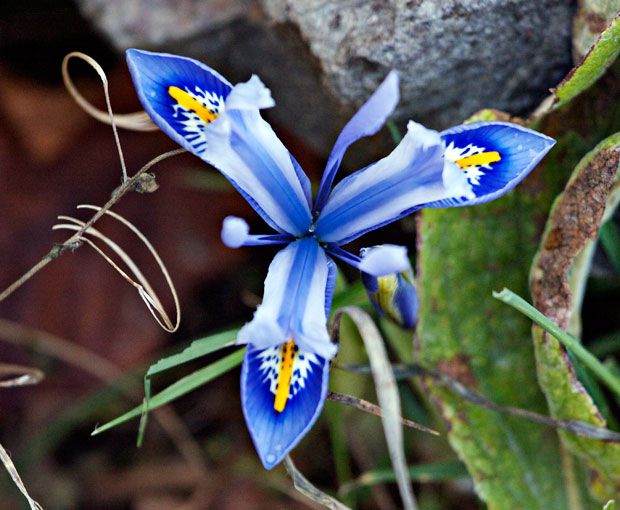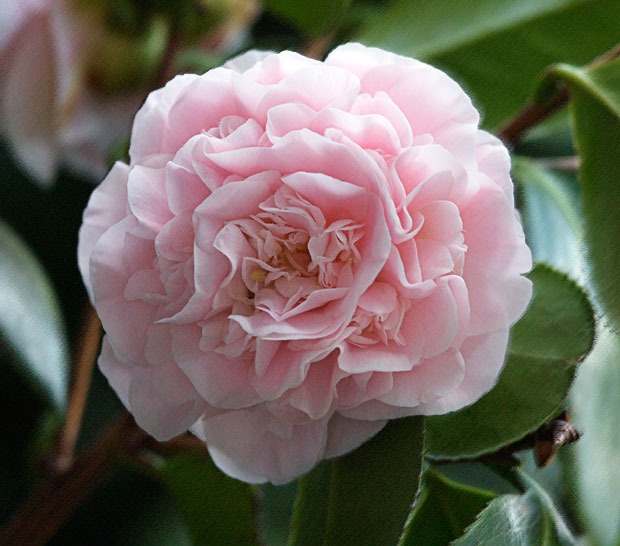As I noted in my introductory comments, I found Matthiessen’s The Snow Leopard more of a spiritual quest than a wildlife safari. I think Matthiessen made the concepts of Zen Buddhism accessible to his reader by comparing it to other forms of religion and by describing his own experiences while practicing it. Although this may have been more important 30 years ago when this book was first published and Buddhism was relatively unknown in America, it still provides insight into the nature and appeal of Zen Buddhism.
Those familiar with Taoism or the Tao Te Ching may find this early introduction helpful:
The traditional founder of Ch’an Buddhism (in Japan, Zen) was Bodhidharma, a great teacher in the apostolic line of Sakyamuni, who carried the teaching from India to China in A.D. 527. Perhaps influenced by the simplicity of the Chinese philosophy called Tao (the Way), the fierce “blue-eyed monk,” or “wall-gazer,” exhorted his followers to ignore the sectarian disputes, ponderous scriptures, proliferating icons, and priestly trappings of organized religion and return to the intense meditation that had opened the Buddha’s Path. Led by a succession of great masters, Zen Buddhism (of which Bodhidharma was First Patriarch in China) infused all of Oriental art and culture with the spare clarity of its vision. In Zen thought, even attachment to the Buddha’s “golden words” may get in the way of ultimate perception; hence the Zen expression “Kill the Buddha!” The Universe itself is the scripture of Zen, for which religion is no more and no less than the apprehension of the infinite in every moment.
How wondrous, how mysterious!
I carry fuel, I draw water.7
This paragraph reminded me of how my own interest in Taoism and Buddhism has evolved. I was first drawn by Chinese and Japanese art, particularly Sumi paintings and Japanese block prints, and, later, by Japanese furniture when I was doing woodworking. It was only later that I discovered the Tao Te Ching and was hooked by the similarity to many of my own beliefs about nature. From there it wasn’t too far to Cha’n Buddhism.
Though I’m personally unconvinced by Matthiessen’s attempts to link enlightenment to science,
What the Buddha perceived was his identity with the Universe; to experience existence in this way is to be the Buddha. Even the brilliant “white light” that may accompany mystical experience (the “inner light” attested to by Eskimo shamans) might be perceived as a primordial memory of Creation. “Man is the matter of the cosmos, contemplating itself,” a modern astronomer has said;27 another points out that each breath we take contains hundreds of thousands of the inert, pervasive argon atoms that were actually breathed in his lifetime by the Buddha, and indeed contain parts of the “snorts, sighs, bellows, shrieks” of all creatures that ever existed, or will ever exist. These atoms flow backward and forward in such useful but artificial constructs as time and space, in the same universal rhythms, universal breath as the tides and stars, joining both the living and the dead in that energy which animates the universe. What is changeless and immortal is not individual body-mind but, rather, that Mind which is shared with all of existence, that stillness, that incipience which never ceases because it never becomes but simply IS. This teaching, still manifest in the Hindu and Buddhist religions, goes back at least as far as the doctrine of Maya that emerges in the Vedic civilizations and may well derive from much more ancient cultures; Maya is Time, the illusion of the ego, the stuff of individual existence, the dream that separates us from a true perception of the whole. It is often likened to a sealed glass vessel that separates the air within from the clear and unconfined air all around, or water from the all-encompassing sea. Yet the vessel itself is not different from the sea, and to shatter or dissolve it brings about the reunion with all universal life that mystics seek, the homegoing, the return to the lost paradise of our “true nature.”
I did like his metaphor of “a sealed glass vessel,” probably because I trust my intuitive side more than my rational side when it comes to spiritual matters. I concede the opposite might well be true for many readers, though.
I don’t know a lot about Tantra, and what little I did know didn’t strike me as particularly “spiritual,” but this quotation
In Tantra, the pessimistic fear of desire and pleasure that characterized early Buddhism was seen as but another form of bondage, and emphasis was placed on being-in-life without suppression of life forces but also without clinging or craving. Tantra concerned itself with the totality of existence, the apprehension of the whole universe within man’s being. All thoughts and acts, including the sex energies, were channeled into spiritual growth, with the transcendence of all opposites the goal; in the communion of sex, wine, and feasting, the illusion of separate identity might be lost, so long as a detached perspective was retained. All things and acts were equal, Interwoven, from the “lowliest” physical functions to the “highest” spiritual yearning, and even consumption of dead human flesh and filth was recommended as an ultimate embrace of all existence. Thus, Tantra might be interpreted” as the practice of mankind’s earliest religious intuition: that body, mind, and nature are all one.
reminded me a lot of Walt Whitman, another favorite I need to re-read soon. Whitman’s version of Transcendentalism often struck me as the most powerful interpretation. Emerson and Thoreau’s single-minded focus on Nature generally seemed too limited for my taste.
I think most of us can identify with Matthiessen’s dream of being immersed in light,
In a dream I am walking joyfully up the mountain. Something breaks and falls away, and all is light. Nothing has changed, yet all is amazing, luminescent, free. Released at last, I rise into the sky …. This dream comes often. Sometimes I run, then lift up like a kite, high above earth, and always I sail transcendent for a time before awaking. I choose to awake, for fear of falling, yet such dreams tell me that I am a part of things, if only I would let go, and keep on going. “Do not be heavy,” Soen Roshi says. “Be light, light, light-full of light!”
In recent dreams, I have twice seen light so brilliant, so intense, that it “woke me up,” but the light did not continue into wakefulness. Which was more real, the waking or the dream? The last Japanese character written in this life by Soen Roshi’s venerable teacher, and the last word spoken, was the word for “dream.”
because light is, after all, the root of the word “Enlightenment.” It’s certainly no coincidence that Jesus is often shown illuminated by a ray of light that has just broken through storm clouds.
I think the true significance of the title can be found in this passage:
In the longing that starts one on the path is a kind of homesickness and some way, on this journey, I have started home. Homegoing is the purpose of my practice, of my mountain meditation and my day-break chanting, of my koan: All the peaks are covered with snow why is this one bare? To resolve that illogical question would mean to burst apart, let fall all preconceptions and supports. But I am not ready to let go, and so I shall not resolve my koan, or see the snow leopard, that is to say, perceive it. I shall not see it because I am not ready.
I meditate for the last time on this mountain that is bare, though others all around are white with snow. Like the bare peak of the koan, this one is not different from myself. I know this mountain because I am this mountain, I can feel it breathing at this moment, as its grass tops stray against the snows. If the snow leopard should leap from the rock above and manifest itself before me-S-A-A-O!-then in that moment of pure fright, out of my wits, I might truly perceive it, and be free.
Matthiessen learns much about the snow leopard and about himself on this journey, but he never sees the snow leopard and doesn’t solve the koan he was given or attain enlightenment. In that sense he’s like most of us, though he’s probably much farther on the way “home” than we are because he’s been homesick longer.
If you have a half hour to spend, you might enjoy discovering how much further he is down the road in this interview given during the 30th anniversary of his work.
Like this:
Like Loading...

